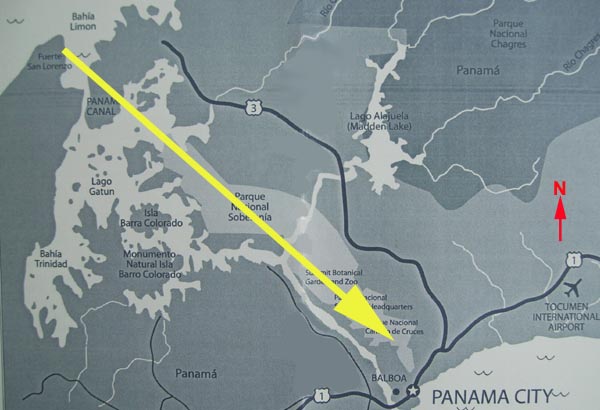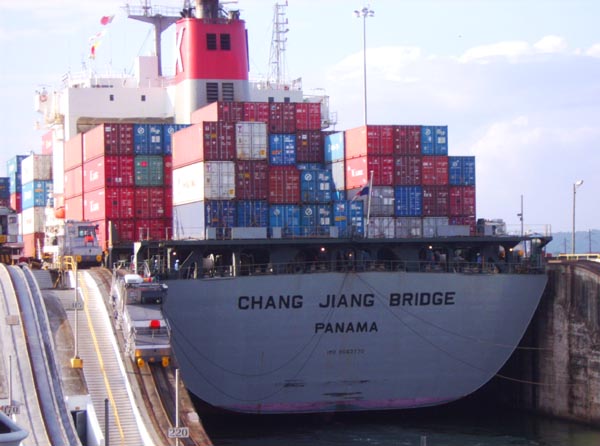With Manual Noriega safely locked-up is an American prison, it’s a safe and fun ride. The Panamanian authorities are always on the lookout for drug smugglers, seeking suspicious ships (like the one below) that may be carrying marijuana:

We have first-hand experience with locks ourselves, as Janet and I took the kids on a cross-country barge boat trip in Ireland a few years back, a 45-foot floating mobile home, complete with kitchen, bathroom and head.
As we traversed the Emerald Isle, we had to operate the locks ourselves and Andy and Jen became competent lockmasters, elevating us up to 15 feet at a time to bypass the weirs (waterfalls) that dot the ancient canals.
Transition Cruising
A great way to traverse the Panama Canal is on a “transition cruise”, which happens in the late spring and fall, when the ships shuttle between Alaska in the summer and the Caribbean for the winter. You can also go through the canal on the around the world cruises.
When riding a cruise ship through the Panama Canal, it’s best to have your breakfast on your veranda so you can watch your ships pass through the locks. Here is a view of the east entrance of the Canal Zone:

The cost of the Panama Canal crossing for the ship is over $200,000 for the nine-hour voyage, a relative bargain when you consider that the fuel costs alone to go “around the horn” costs over $800,000 and takes three weeks. The Panama Canal serves over 15,000 ships per year, with dozens of ships queuing-up in the pre-dawn darkness:

A Man, a Plan, a Canal: Panama
The Panama Canal is the engineering triumph of the 20th century, built at a cost of over 25,000 lives lost, mostly due to accidents (landslides) and disease (yellow fever and malaria). Disposing of the dead bodies was such a problem that the canal construction firm started pickling the corpses in oak barrels and selling them to medical schools for research. Barrels of pickled construction workers were neatly stacked in the dissection labs, a morbid side-benefit of the Panama Canal project.
The strange geography of Panama is like an “S” laid on its side, such that a westward passage actually travels in a southeastern direction:

The largest ships (called Panamax ships), barely fit through the giant locks, and you can literally touch the side of the locks from your balcony. The ships queue-up by the dozen awaiting their turn to enter the Canal, and a Panamanian pilot takes-control of the ship. The first westward-bound locks are the famous Gatun locks, raising the ship 85 feet to Gatun Lake:

The panamax ships barely fit, with just inches to spare. Some of the largest cruise ships (i.e. the QE2) cannot fit in the Panama Canal. Panama recently announced plans to create new, wider lock channels at a cost of over four billion dollars, a project that will not be completed until 2022.

The “cut” is where it was necessary to chop through the continental divide to expand Gatun Lake. Here is a part of the cut, where landslides still occur:

On the pacific side we have the Pedro Miguel lock:


